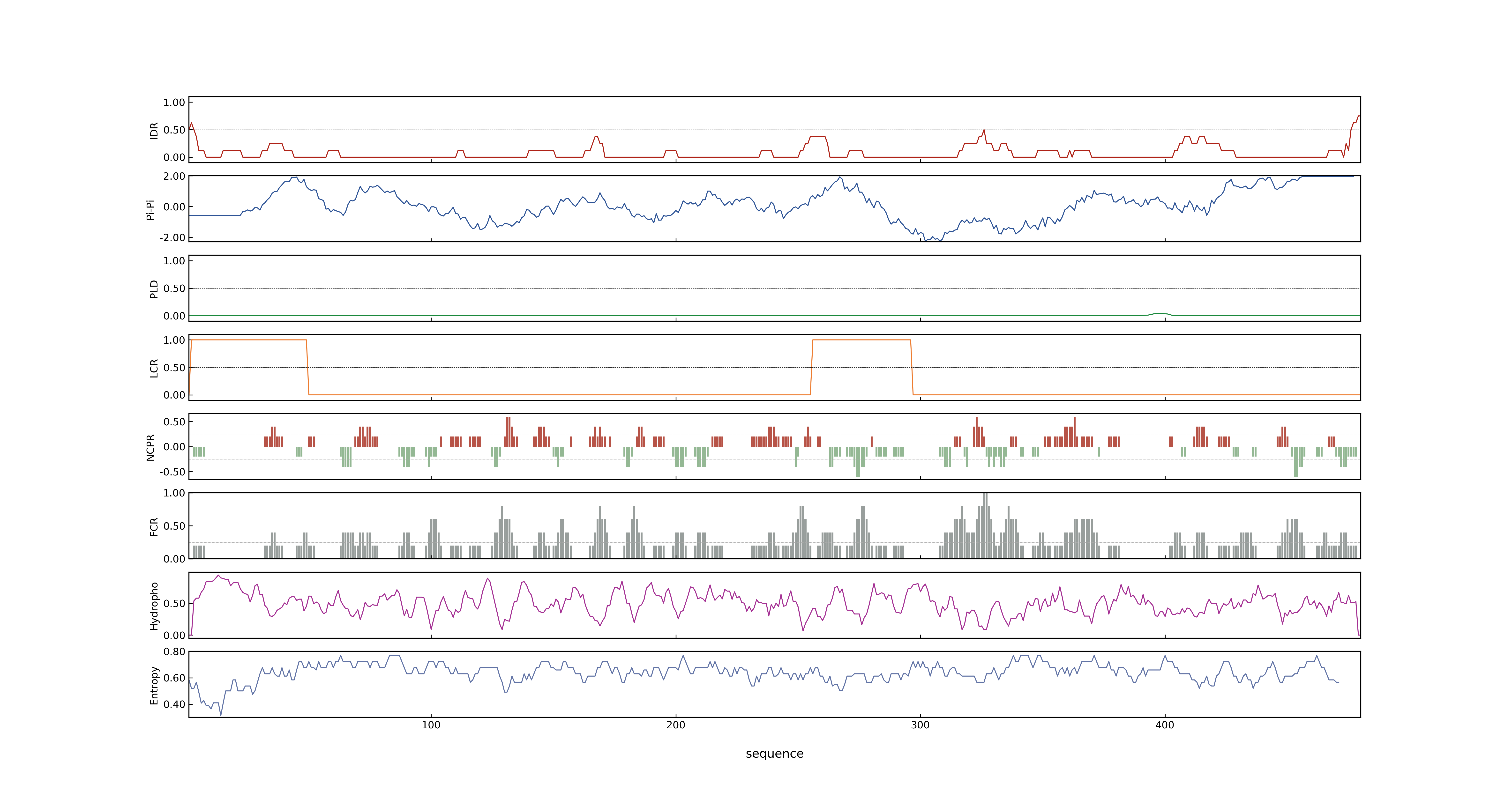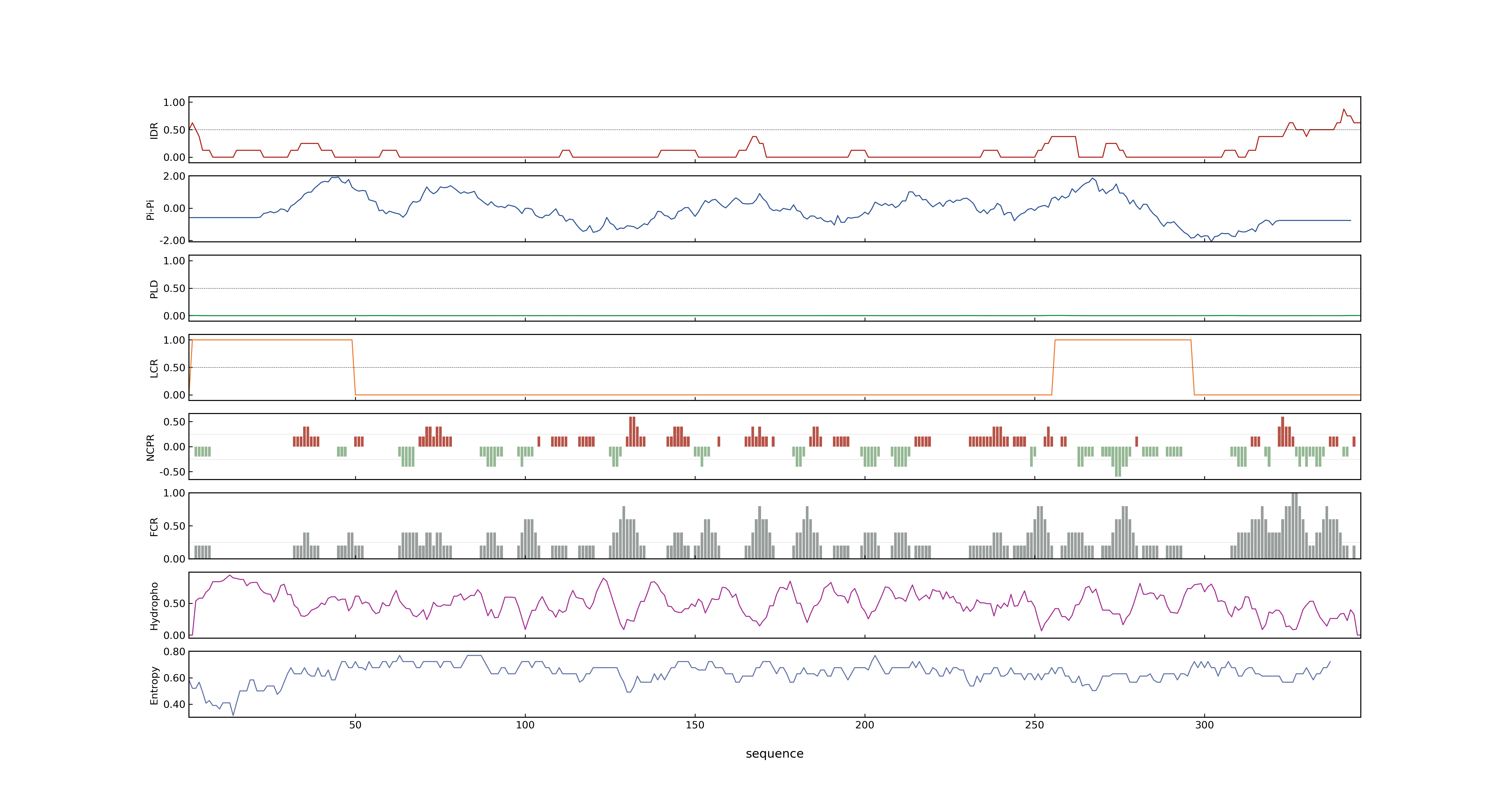- Information
- Symbol: D11,CPB1,CYP724B1,GNS4
- MSU: LOC_Os04g39430
- RAPdb: Os04g0469800
- PSP score
- LOC_Os04g39430.1: 0.015
- LOC_Os04g39430.2: 0.0937
- PLAAC score
- LOC_Os04g39430.1: 0
- LOC_Os04g39430.2: 0
- pLDDT score
- NA
- MolPhase score
- LOC_Os04g39430.1: 0.25766718
- LOC_Os04g39430.2: 0.00246226
- MolPhase Result
- Publication
- H3K36 methylation is critical for brassinosteroid-regulated plant growth and development in rice, 2012, Plant J.
- Erect leaves caused by brassinosteroid deficiency increase biomass production and grain yield in rice, 2006, Nat Biotechnol.
- A novel cytochrome P450 is implicated in brassinosteroid biosynthesis via the characterization of a rice dwarf mutant, dwarf11, with reduced seed length, 2005, Plant Cell.
- RAV-Like1 maintains brassinosteroid homeostasis via the coordinated activation of BRI1 and biosynthetic genes in rice, 2010, Plant Cell.
- CLUSTERED PRIMARY BRANCH 1, a new allele of DWARF11, controls panicle architecture and seed size in rice., 2015, Plant Biotechnol J.
- GNS4, a novel allele of DWARF11, regulates grain number and grain size in a high-yield rice variety., 2017, Rice (N Y).
- Genbank accession number
- Key message
- Molecular and biochemical studies reveal that two different cytochrome P450s, CYP90B2/OsDWARF4 and CYP724B1/D11, function redundantly in C-22 hydroxylation, the rate-limiting step of brassinosteroid biosynthesis
- The gene was found to encode a novel cytochrome P450 (CYP724B1), which showed homology to enzymes involved in brassinosteroid (BR) biosynthesis
- Precise determination of the defective step(s) in BR synthesis in d11 mutants proved intractable because of tissue specificity and the complex control of BR accumulation in plants
- However, 6-deoxotyphasterol (6-DeoxoTY) and typhasterol (TY), but not any upstream intermediates before these compounds, effectively restored BR response in d11 mutants in a lamina joint bending assay
- Multiple lines of evidence together suggest that the D11/CYP724B1 gene plays a role in BR synthesis and may be involved in the supply of 6-DeoxoTY and TY in the BR biosynthesis network in rice
- Consistently, transcriptome analyses revealed that SDG725 depletion results in down-regulation by more than two-fold of over 1000 genes, including D11, BRI1 and BU1, which are known to be involved in brassinosteroid biosynthesis or signaling pathways
- Furthermore, RAVL1 is also required for the expression of the BR biosynthetic genes D2, D11, and BRD1 that are subject to BR negative feedback
- We have characterized a rice (Oryza sativa) dwarf mutant, dwarf11 (d11), that bears seeds of reduced length
- To understand the mechanism by which seed length is regulated, the D11 gene was isolated by a map-based cloning method
- The dwarf phenotype of d11 mutants was restored by the application of the brassinolide (BL)
- Overexpression of CPB1/D11 under the background of cpb1 mutant not only rescued normal panicle architecture and plant height, but also had a larger leaf angle and seed size than the controls
- Genetic transformation experiments confirmed that a His360Leu amino acid substitution residing in the highly conserved region of CPB1/D11 was responsible for the panicle architecture and seed size changes in the cpb1 mutants
- Overexpression of GNS4 significantly increased organ size, 1000-grain weight, and panicle size, and subsequently enhanced grain yields in both the Nipponbare and Wuyunjing7 (a high-yielding cultivar) backgrounds
- A single nucleotide polymorphism (deletion) in the promoter region of GNS4 reduced its expression level in the mutant, leading to reduced grain number and smaller grains
- Morphological and cellular analyses suggested that GNS4 positively regulates grain size by promoting cell elongation
- GNS4 was identified as a positive regulator of grain number and grain size in rice
- We characterized a rice mutant gns4 (grain number and size on chromosome 4) with reduced organ size, fewer grains per panicle, and smaller grains compared with those of WT
- Map-based cloning indicated that the GNS4 gene, encoding a cytochrome P450 protein, is a novel allele of DWARF11 (D11)
- These results suggest that GNS4 is key target gene with possible applications in rice yield breeding
- GNS4 can be targeted in breeding programs to increase yields
- Connection
- BU1, D11~CPB1~CYP724B1~GNS4, H3K36 methylation is critical for brassinosteroid-regulated plant growth and development in rice, Consistently, transcriptome analyses revealed that SDG725 depletion results in down-regulation by more than two-fold of over 1000 genes, including D11, BRI1 and BU1, which are known to be involved in brassinosteroid biosynthesis or signaling pathways
- D11~CPB1~CYP724B1~GNS4, SDG725, H3K36 methylation is critical for brassinosteroid-regulated plant growth and development in rice, Consistently, transcriptome analyses revealed that SDG725 depletion results in down-regulation by more than two-fold of over 1000 genes, including D11, BRI1 and BU1, which are known to be involved in brassinosteroid biosynthesis or signaling pathways
- D11~CPB1~CYP724B1~GNS4, D61~OsBRI1, H3K36 methylation is critical for brassinosteroid-regulated plant growth and development in rice, Consistently, transcriptome analyses revealed that SDG725 depletion results in down-regulation by more than two-fold of over 1000 genes, including D11, BRI1 and BU1, which are known to be involved in brassinosteroid biosynthesis or signaling pathways
- D11~CPB1~CYP724B1~GNS4, OsDWARF4~CYP90B2, Erect leaves caused by brassinosteroid deficiency increase biomass production and grain yield in rice, Molecular and biochemical studies reveal that two different cytochrome P450s, CYP90B2/OsDWARF4 and CYP724B1/D11, function redundantly in C-22 hydroxylation, the rate-limiting step of brassinosteroid biosynthesis
- D11~CPB1~CYP724B1~GNS4, D2~CYP90D2~SMG11, RAV-Like1 maintains brassinosteroid homeostasis via the coordinated activation of BRI1 and biosynthetic genes in rice, Furthermore, RAVL1 is also required for the expression of the BR biosynthetic genes D2, D11, and BRD1 that are subject to BR negative feedback
- D11~CPB1~CYP724B1~GNS4, RAVL1, RAV-Like1 maintains brassinosteroid homeostasis via the coordinated activation of BRI1 and biosynthetic genes in rice, Furthermore, RAVL1 is also required for the expression of the BR biosynthetic genes D2, D11, and BRD1 that are subject to BR negative feedback
- D11~CPB1~CYP724B1~GNS4, MRG702, MRG702, a reader protein of H3K4me3 and H3K36me3, is involved in brassinosteroid-regulated growth and flowering time control in rice., Gene transcription analyses showed that MRG702 knock-down resulted in the down-regulation of BR-related genes, including D11, BRI1, and BU1, and several flowering genes including Ehd1, Ehd2/OsID1/RID1, Ehd3,OsMADS50, Hd3a, and RFT1
Prev Next

